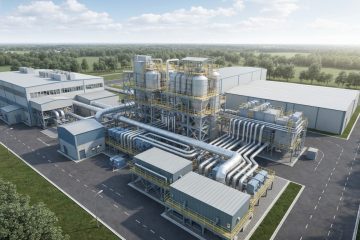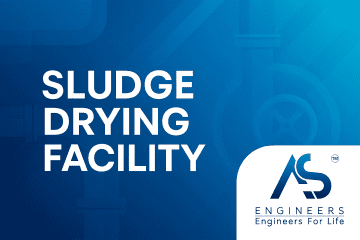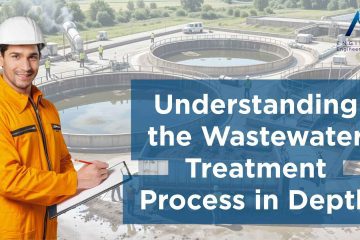Have you ever wondered what happens to water after you use it? The wastewater treatment process is a vital system that protects our environment and public health. It cleans used water from our homes and industries, making it safe to return to the water cycle. This multi-stage process is essential for preventing pollution and ensuring a sustainable supply of clean water for everyone. Effective water treatment is the key to preserving our planet’s most precious resource.
Table of contents
- Key Highlights
- Overview of Wastewater Treatment in India
- Classification and Sources of Wastewater
- Introducing the Four Stages of Wastewater Treatment
- Stage 1 – Preliminary Treatment Explained
- Stage 2 – Primary Treatment Steps
- Stage 3 – Secondary (Biological) Treatment
- Stage 4 – Tertiary and Advanced Treatment
- Sludge Treatment and Resource Recovery
- Modern Technologies Improving Wastewater Treatment
- Frequently Asked Questions
- Conclusion
Key Highlights
Here are the key takeaways from the wastewater treatment process:
- Wastewater treatment involves four main stages: preliminary, primary, secondary, and tertiary treatment.
- The primary treatment stage focuses on removing suspended solids through sedimentation.
- Secondary treatment uses biological processes to break down organic matter.
- Tertiary treatment provides advanced polishing to ensure water is safe for discharge.
- The sludge process handles the solid waste removed, often recovering resources like energy.
- Each stage is crucial for environmental protection and delivering clean water.
Overview of Wastewater Treatment in India
In India, the need for effective wastewater treatment is growing rapidly due to urbanization and industrial expansion. The country relies on a network of wastewater treatment plants to manage sewage and protect natural water bodies from contamination.
Facilities like the modern sewage treatment plant are becoming increasingly important for sustainable water management. These plants use a combination of technologies to purify water, ensuring it meets strict regulatory standards before being released or reused.
The Need for Wastewater Treatment in Urban and Rural Settings
Wastewater treatment is not just an option; it’s a necessity for both urban areas and rural communities. In densely populated cities, massive volumes of wastewater from homes and industries can quickly overwhelm and pollute local water bodies if left untreated. This poses a significant threat to public health and the environment.
In rural areas, the challenges are different but just as important. Improper disposal of wastewater can contaminate groundwater, the primary source of drinking water for many. This can lead to the spread of waterborne diseases and disrupt the local ecosystem.
Ultimately, treating wastewater is about protecting the natural water cycle. Whether in a bustling city or a quiet village, cleaning used water before it re-enters the environment prevents pollution, safeguards wildlife, and ensures that our rivers, lakes, and oceans remain healthy for future generations.
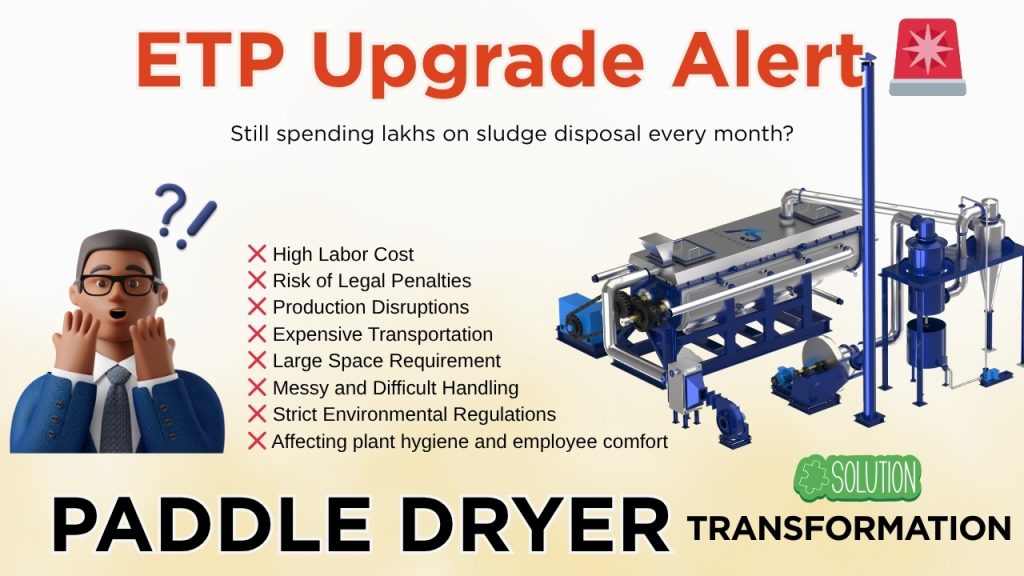
Key Terms and Concepts in Wastewater Management
To understand wastewater management, it helps to know a few key terms. These concepts describe the pollutants that treatment plants are designed to remove. For instance, suspended solids are tiny particles of waste that remain floating in the water.
These impurities are measured using specific metrics. Here are a few important ones:
- Total Suspended Solids (TSS): This measures the total amount of solid particles that are not dissolved in the water.
- Biochemical Oxygen Demand (BOD): This indicates the amount of oxygen needed by microorganisms to break down organic waste.
- Chemical Oxygen Demand (COD): This measures the total amount of oxygen required to chemically oxidize all organic pollutants.
During primary sedimentation, many of these solids are removed through gravity. Understanding these terms helps clarify how each stage of the treatment process works to clean the water.
Classification and Sources of Wastewater
Wastewater is not all the same. It is generally classified based on its source, which determines its composition and the treatment it requires. The two main categories are domestic and industrial wastewater.
Domestic wastewater comes from households and includes sewage water from everyday activities like bathing and washing. Industrial wastewater, on the other hand, originates from manufacturing and commercial processes. Each type contains different pollutants, requiring tailored treatment approaches. We’ll explore their unique characteristics next.
Domestic Versus Industrial Wastewater Characteristics
The differences between domestic and industrial wastewater are significant. Domestic wastewater, generated from homes and businesses, is generally more diluted. It primarily contains organic waste, soaps, and detergents, making it relatively straightforward to treat.
Industrial wastewater is a different story. It comes from manufacturing, mining, and agricultural activities and can contain high concentrations of heavy metals, toxic chemicals, and other complex pollutants. Because of its hazardous nature, industrial wastewater treatment is often more specialized and may require pretreatment before it can be sent to a municipal plant.
This distinction is critical for effective waste water treatment. The following table highlights some of the key differences:
| Characteristic | Domestic Wastewater | Industrial Wastewater |
|---|---|---|
| Source | Households, businesses (restrooms, laundry, kitchens) | Manufacturing, mining, agriculture, power plants |
| Pollutants | Organic matter, soaps, food scraps, human waste | Heavy metals, toxic chemicals, high organic loads, specific compounds |
| Toxicity | Generally lower and more biodegradable | Often higher and may contain non-biodegradable or toxic substances |
| Treatment | Standardized processes are usually effective | Requires specialized, often on-site, pretreatment |
Understanding Sewage Composition and Challenges
Raw sewage is a complex mixture that presents several treatment challenges. It’s mostly water but contains a variety of pollutants, including organic solids and dissolved organic matter. These materials come from human waste, food scraps, and other household and commercial activities.
The primary challenge in treating sewage is removing these organic solids and reducing the total suspended solids (TSS). If released untreated, this organic matter would decompose in natural water bodies, consuming oxygen and harming aquatic life. This depletion of oxygen is one of the main reasons sewage must be treated.
Furthermore, raw sewage contains pathogens, nutrients, and other contaminants that pose risks to public health and the environment. An effective treatment process must address all these components to produce clean water that can be safely discharged.
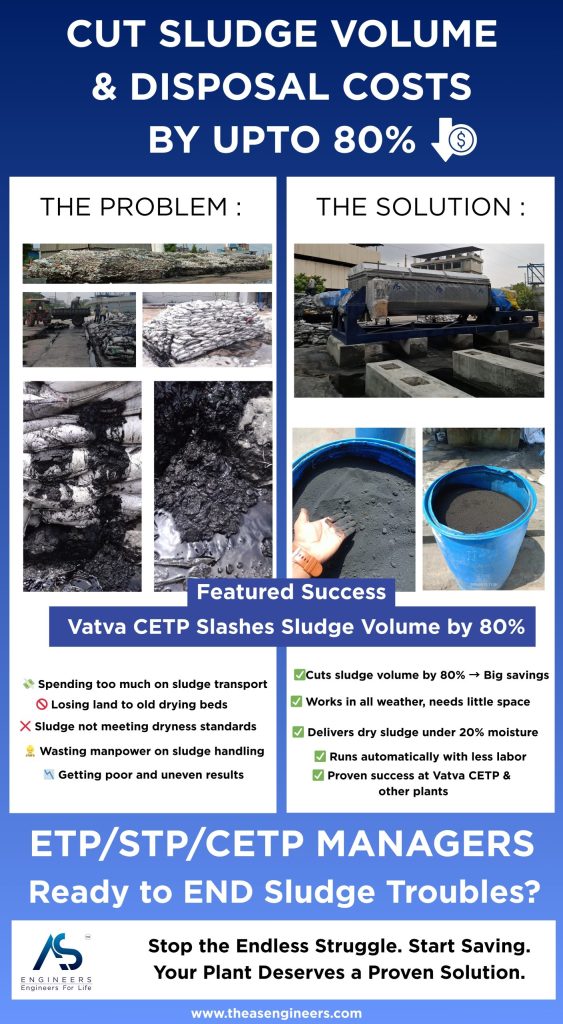
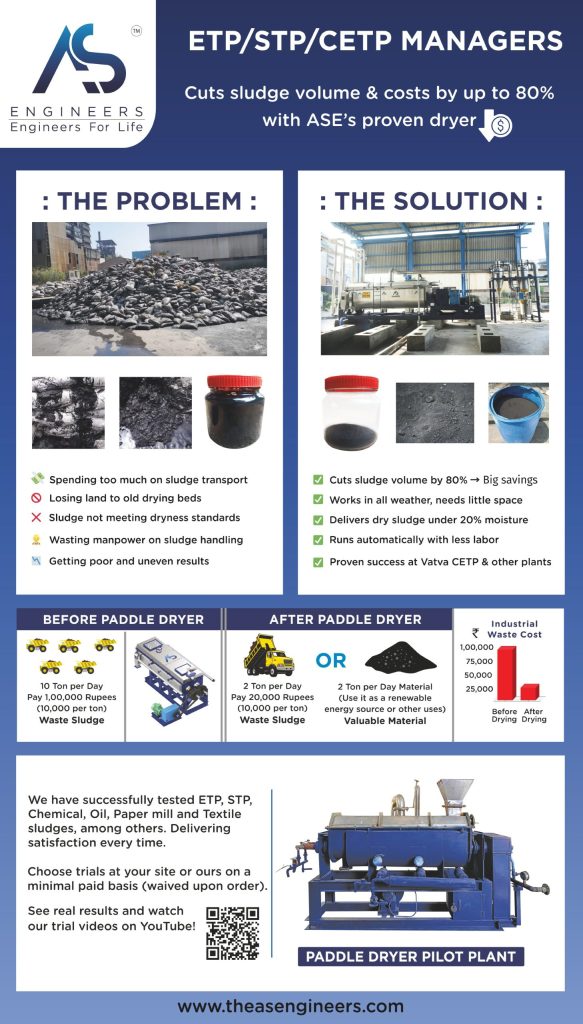
Introducing the Four Stages of Wastewater Treatment
The wastewater treatment plant operates through a methodical treatment process designed to purify water step-by-step. This process is typically broken down into four main stages, each targeting different types of contaminants.
From removing large objects in the initial phase to polishing the water in the final stage, every step is essential. The journey begins with preliminary and primary treatment, which physically removes solids, followed by secondary treatment, which uses biology to clean the water. Let’s look at these stages in order.
Listing the Four Main Stages in Order
The wastewater treatment process is a systematic journey that purifies water through four distinct stages. Each stage is designed to progressively remove contaminants, ensuring the final output is safe for the environment. Understanding the order is key to appreciating how the entire system functions.
To achieve this, wastewater flows through the plant in a specific sequence. Here are the four main stages in order:
- Preliminary Treatment: This first step removes large solids, debris, and grit that could damage pumps and other equipment.
- Primary Treatment: Here, gravity is used to settle out heavier suspended solids, which form sludge at the bottom of large tanks.
- Secondary Treatment: This biological stage uses microorganisms to consume dissolved organic pollutants in the water.
- Tertiary Treatment: The final polishing stage removes any remaining impurities, nutrients, and pathogens before discharge.
Each stage builds upon the last, gradually cleaning the water. This multi-step approach is what makes the treatment process so effective at protecting our water resources.
Why Multiple Stages Are Essential for Effective Treatment
Have you ever wondered why wastewater treatment requires so many steps? A single-stage treatment process would be incapable of removing the wide variety of pollutants found in wastewater. Each phase is specialized to target different types of contaminants, from large debris to microscopic pathogens.
The initial stages are designed to remove physical waste. For instance, primary treatment focuses on removing suspended solids through sedimentation. This prepares the water for the next phase, where biological processes can work more efficiently. Without this step, the system would quickly become clogged and ineffective.
Finally, the later stages address dissolved pollutants and reduce the oxygen demand of the water. Secondary and tertiary treatments are crucial for environmental protection, as they remove harmful organic matter and nutrients that could otherwise pollute rivers and lakes. This multi-stage approach ensures that the water is thoroughly cleaned before it is returned to nature.
Stage 1 – Preliminary Treatment Explained
The journey of wastewater purification begins with preliminary treatment. This crucial first stage acts as a protective measure for the entire treatment plant. Its main purpose is to remove large solids and abrasive materials like sand and gravel.
This initial screening and grit removal process prevents damage and blockages in the downstream equipment. By getting rid of the biggest objects first, the plant can operate more smoothly and efficiently, reducing maintenance costs and ensuring the subsequent stages work as intended.
Screening and Removal of Large Debris
Screening is the very first action performed on incoming wastewater. It involves passing the water through screens to catch and remove large objects that have found their way into the sewer system. Think of it as a giant strainer that protects the delicate machinery of the plant.
This step is vital because items like plastic, rags, and wood can cause serious blockages and damage pumps and pipes. By removing them early, the plant avoids costly repairs and operational downtime. The screening process separates this inorganic trash from the organic waste that will be treated later.
The materials removed during screening include:
- Plastics and wrappers
- Rags and wipes
- Paper and food scraps
- Pieces of wood and other debris
After being caught by the bar screens, this debris is collected and properly disposed of, ensuring a smoother flow of water to the next stage.
Equipment Used in Preliminary Treatment (Bar Screens, Grit Chambers)
The preliminary stage relies on simple but effective equipment to do its job. The primary tools are bar screens and grit chambers, each designed to remove specific types of large solids. Bar screens are the first line of defense, consisting of vertical or inclined bars that physically block large debris.
After passing through the bar screens, the wastewater flows into grit chambers. Here, the flow of water is slowed down, allowing heavier, abrasive particles like sand, gravel, and small stones to settle at the bottom. This process is known as grit removal.
This two-pronged approach is highly effective. Bar screens protect the system from large objects, while grit chambers prevent wear and tear on pumps and mechanical equipment from abrasive materials. Together, they ensure the wastewater is ready for the next phase of treatment without causing damage to the plant’s infrastructure.
Stage 2 – Primary Treatment Steps
Following preliminary screening, the wastewater moves into primary treatment. This stage is all about using gravity to do the heavy lifting. The main goal is to separate settleable organic and inorganic solids from the water.
In large basins known as settling tanks, the water is slowed down, allowing heavier suspended solids to sink to the bottom. This process, called primary sedimentation, significantly reduces the pollutant load before the water moves on to the more complex biological treatment phase.
Sedimentation Tanks and Settling of Suspended Solids
Sedimentation tanks are the heart of primary treatment. These large, circular or rectangular basins are designed to hold wastewater for several hours. During this time, the flow of water is significantly reduced, creating a calm environment where gravity can take over.
As the water sits, the heavier suspended solids gradually sink to the bottom of the tank. This collected material is known as primary sludge. At the same time, lighter materials like oils and grease float to the surface, where they can be skimmed off.
This simple physical process is remarkably effective. Sedimentation tanks can remove a large percentage of the total suspended solids from the water. The partially clarified water then flows out of the settling tank and on to the next stage, while the collected sludge is removed for separate processing.
Handling and Processing of Primary Sludge
What happens to all the solid waste collected during primary treatment? This material, known as primary sludge, cannot simply be discarded. It requires its own specialized handling and treatment through a dedicated sludge process.
The collected primary sludge is first removed from the bottom of the sedimentation tanks. From there, it is typically sent to large tanks called digesters. In the digesters, the sludge undergoes further treatment to reduce its volume and stabilize the organic matter within it.
This sludge process is not just about disposal; it’s also about resource recovery. The treated sludge can be dewatered and used for agricultural purposes or, in many modern plants, processed to produce biogas, a renewable energy source. This turns a waste product into a valuable resource.
Stage 3 – Secondary (Biological) Treatment
The third stage, secondary treatment, is where the real deep cleaning happens. This phase uses natural biological processes to remove dissolved organic pollutants that couldn’t be settled out during primary treatment. It is often called the biological breakdown stage.
In this stage, aeration tanks are used to create the perfect environment for helpful microorganisms to thrive. These tiny workers consume the organic waste in the water, converting it into harmless substances. The activated sludge process is one of the most common methods used here.
Biological Processes: Activated Sludge, Trickling Filters, and More
Secondary treatment relies on a variety of biological processes to purify wastewater. The goal is to cultivate a healthy population of microorganisms, like aerobic bacteria, that feast on the dissolved organic pollutants. These microbes are the workhorses of the treatment plant.
One of the most common methods is the activated sludge process, where wastewater is mixed with a microbe-rich sludge in large aeration tanks. Another popular method is the trickling filter, where wastewater trickles over a bed of media covered in a film of microorganisms. These systems are designed to maximize contact between the microbes and the pollutants.
Different types of systems are used, each with its own advantages. These can be categorized as:
- Aerobic Systems: Use oxygen-dependent bacteria, like in activated sludge processes.
- Anaerobic Systems: Work in oxygen-free environments, often for high-strength industrial wastewater.
- Hybrid Systems: Combine both aerobic and anaerobic processes for enhanced efficiency.
- Biofilm Reactors: Use surfaces for microbes to grow on, like in trickling filters.
Differences Between Chemical and Biological Processes at This Stage
At this stage, the focus is heavily on biological treatment, but it’s helpful to understand how it differs from chemical treatment. Biological processes use living microorganisms to naturally break down organic waste. This method reduces the biochemical oxygen demand (BOD) by converting pollutants into biomass, carbon dioxide, and water.
Chemical treatment, in contrast, would involve adding chemicals to achieve a similar outcome. For example, chemicals could be used to precipitate dissolved pollutants or oxidize organic matter. While effective, this approach can be costly and may produce its own byproducts that need to be managed.
The biological approach is often preferred for secondary treatment because it is more sustainable and cost-effective for removing organic waste. It harnesses nature’s own recycling system to clean the water, maintaining the dissolved oxygen levels needed for a healthy ecosystem upon discharge.
Stage 4 – Tertiary and Advanced Treatment
After secondary treatment, the water is already quite clean, but it may not be clean enough. The fourth stage, known as tertiary or advanced treatment, acts as a final polishing step. This phase targets specific impurities that remain, such as fine particles, nutrients, and pathogens.
The goal of tertiary treatment is to produce high-quality treated water that meets strict environmental standards for discharge or is safe for reuse. This advanced treatment ensures the final effluent is safe for the environment and public health.
Filtration, Disinfection, and Polishing of Effluent
Tertiary treatment involves several polishing processes to achieve the highest level of water quality. Filtration is a key step, used to remove any remaining fine suspended particles that did not settle out in earlier stages. Sand filters are commonly used for this purpose.
After filtration, the water undergoes disinfection to eliminate any harmful pathogens, such as bacteria and viruses. This is a critical step to protect public health, especially if the water is being discharged into recreational water bodies or being considered for reuse. The result is clean water that is safe for the environment.
Common methods used in this final stage include:
- Filtration: Using sand or membrane filters to remove fine particles.
- Disinfection: Using chlorine, ozone, or UV light to kill pathogens.
- Nutrient Removal: Targeting substances like nitrogen and phosphorus.
- Chemical Precipitation: To remove specific dissolved pollutants.
Advanced Techniques: Nutrient Removal and Membrane Filtration
For an even higher level of purity, advanced treatment techniques may be employed. Nutrient removal is one such technique, focusing on eliminating nitrogen and phosphorus from the water. These nutrients can cause excessive algae growth (eutrophication) in natural water bodies, starving them of oxygen. Phosphorus removal is often achieved through chemical precipitation or biological processes.
Membrane filtration is another powerful advanced technique. This includes processes like reverse osmosis and nanofiltration, which use semipermeable membranes to remove even the smallest dissolved particles, salts, and contaminants. These technologies can produce water of exceptionally high quality.
Other advanced methods, such as ion exchange, can be used to target specific inorganic pollutants. The choice of technique depends on the quality of the incoming water and the intended use of the final effluent, whether for discharge, irrigation, or even potable reuse.
Sludge Treatment and Resource Recovery
Wastewater treatment is not just about cleaning water; it’s also about managing the solid waste that’s removed. This waste, known as sludge, undergoes its own multi-step sludge process. The goal is to reduce its volume, stabilize it, and, where possible, practice resource recovery.
Modern plants view sludge not as a waste product but as a potential resource. Through processes like anaerobic digestion, sludge can be converted into valuable byproducts like biogas, turning a disposal problem into an energy solution.
Sludge Thickening, Digestion, and Dewatering
The first step in managing sludge is sludge thickening. This process increases the solid content of the sludge, reducing its overall volume and making it easier to handle. Primary sludge can be thickened to about 8-10% solids.
Next, the thickened sludge often goes to anaerobic digestion. In large, sealed tanks called digesters, microorganisms break down the organic matter in the absence of oxygen. This process stabilizes the sludge and produces biogas, a mixture of methane and carbon dioxide, which can be captured and used as a renewable energy source.
The final step is dewatering. Mechanical methods like centrifuges or belt filter presses are used to squeeze out most of the remaining water. This can reduce the sludge volume by up to 85%, creating a semi-solid “cake” that is much easier and cheaper to transport and dispose of.
Utilization of Treated Sludge in Energy and Agriculture
Treated sludge is more than just waste; it’s a valuable resource. The goal of modern sludge management is resource recovery, which benefits both the environment and the economy. One of the most significant opportunities is in energy recovery.
The biogas produced during anaerobic digestion can be captured and used to generate electricity and heat for the treatment plant, reducing its reliance on a fossil-fueled power grid. In some cases, the biogas is purified and used to fuel vehicles. Beyond energy, treated sludge has significant benefits for agriculture. It is rich in essential nutrients like nitrogen and phosphorus.
Here are some common uses for treated sludge:
- Energy Recovery: Biogas is used for power and heat generation.
- Agriculture: Applied as a nutrient-rich fertilizer, reducing the need for synthetic fertilizers.
- Soil Amendment: Improves soil structure and water retention.
- Composting: Processed into compost for landscaping and gardening.
Modern Technologies Improving Wastewater Treatment
The field of wastewater treatment is constantly evolving, with new technologies making the process more efficient and sustainable. Modern plants are increasingly incorporating advanced treatment methods and smart systems to improve performance.
Innovations like automation and real-time monitoring allow for more precise control over the treatment process. These technologies help optimize energy use, reduce operational costs, and ensure consistent compliance with environmental regulations, paving the way for the next generation of water treatment.
Automation, Real-Time Monitoring, and Indian Innovations
Automation is transforming the way wastewater treatment plants operate. Fully automated systems can run without the need for on-site operators, significantly cutting labor costs while ensuring consistent and reliable performance. These systems use sensors and smart controls for real-time monitoring of water quality and process parameters.
This allows for immediate adjustments to be made, optimizing everything from aeration levels to chemical dosing. Some Indian innovations in this space have developed prefabricated and expandable water treatment systems that are highly energy-efficient, using up to 90% less electricity than conventional plants.
These modern solutions are designed for the challenges of today. Key features of these innovative systems include:
- High energy efficiency, drastically reducing operational costs.
- Fully automated operation with no need for on-site staff.
- Quiet, odor-free performance, making them suitable for urban areas.
- Compliance with strict discharge standards and sustainability goals.
Addressing Water Reuse and Sustainability Goals
Effective wastewater treatment is a cornerstone of sustainability and environmental protection. By cleaning our water, we protect our rivers and lakes, but the benefits don’t stop there. Modern treatment opens the door for large-scale wastewater reuse, a critical strategy for water conservation.
Treated wastewater can be safely repurposed for a variety of non-potable uses. This includes irrigation for agriculture and landscaping, industrial cooling systems, and flushing toilets. By reusing water, we reduce the strain on our precious freshwater resources, creating a more circular and sustainable water economy.
This approach directly supports global sustainability goals, particularly those related to clean water and sanitation. As we face growing water challenges, the ability to safely reuse treated wastewater will become increasingly important for building resilient and water-secure communities.
Frequently Asked Questions
Do the four stages apply to both domestic and industrial wastewater?
Yes, the four core stages of wastewater treatment apply to both. However, industrial wastewater often contains unique and toxic pollutants, so it typically requires specialized pretreatment before entering the main treatment process. This ensures the municipal sewage water system can handle it effectively.
What happens to solid waste removed during treatment?
Solid waste, or sludge, undergoes a separate sludge process. This primary sludge is thickened, stabilized through anaerobic digestion, and dewatered. This process can achieve resource recovery by producing biogas for energy and creating a nutrient-rich solid that can be used in agriculture.
How does the secondary stage help in contaminant removal?
The secondary treatment stage uses biological processes, like the activated sludge method, to remove dissolved organic contaminants. Microorganisms in aeration tanks consume these pollutants, significantly reducing the biochemical oxygen demand (BOD) and producing much cleaner treated water that is ready for the next phase.
What are the key differences between primary, secondary, and tertiary treatment stages in wastewater treatment?
Primary treatment physically removes suspended solids using sedimentation. Secondary treatment uses biological processes to break down dissolved organic matter, reducing chemical oxygen demand. Tertiary treatment is a final polishing stage that uses filtration and disinfection to remove remaining fine particles, nutrients, and pathogens.
How does each stage of the wastewater treatment process contribute to environmental protection?
Each stage provides cumulative environmental protection. Preliminary and primary stages remove organic solids that would otherwise deplete oxygen in water bodies. Secondary and tertiary stages remove dissolved pollutants and pathogens, ensuring the final treated wastewater is safe to discharge, preserving the health of our clean water sources.
What technologies are commonly used in the different stages of wastewater treatment?
Common technologies include bar screens in preliminary treatment, sedimentation tanks in primary, and aeration tanks and trickling filters in secondary. Tertiary treatment often uses advanced methods like membrane filtration, UV light disinfection, and ion exchange to achieve the highest level of purification.
How can the public contribute to more effective wastewater management?
The public can contribute to public health and better water management by being mindful of what goes down the drain. Avoid disposing of grease, wipes, and chemicals in sinks or toilets. Supporting water reuse and conservation efforts also helps reduce the overall load on waste water treatment facilities, promoting sustainability.
Conclusion
In conclusion, understanding the four stages of wastewater treatment is crucial for ensuring effective management of our vital water resources. Each stage, from preliminary to tertiary treatment, plays an essential role in removing contaminants and protecting the environment. As urbanization continues to grow, so does the need for efficient wastewater management systems that can adapt to various challenges.
By adopting modern technologies and practices, we can enhance the treatment process and promote sustainability. It’s time to take a proactive approach toward wastewater treatment and contribute to cleaner, safer water for all. If you’re interested in learning more about how you can get involved in improving wastewater management, feel free to reach out for expert insights!


